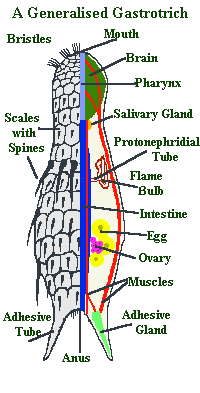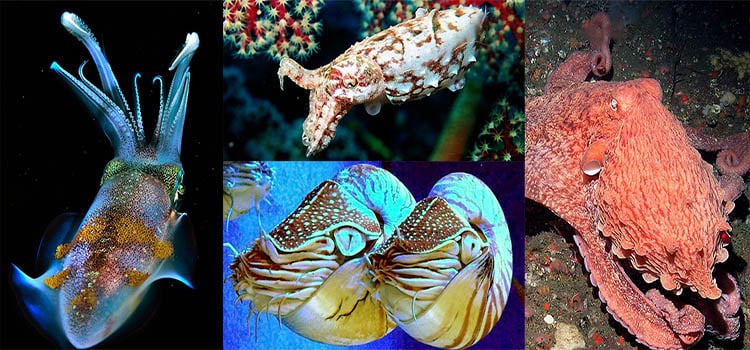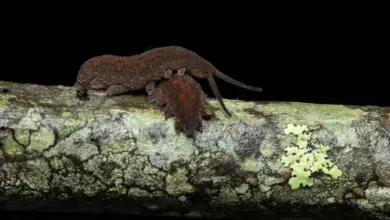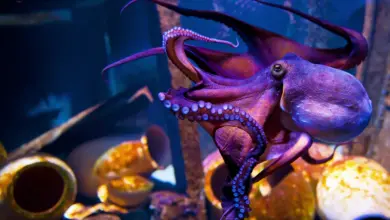Phylum Gastrotricha (The Gastrotrichs)
Etymology: From the Greek Gaster for Stomach, and thrix for hair.
Characteristics of Gastrotricha:
- Bilaterally symmetrical, and vermiform.
- Body has more than two cell layers, tissues and organs.
- Body contains no internal cavity.
- Body possesses a through gut with a subterminal anus.
- Body covered in a cuticle bearing numerous scales, spines or hooks.
- Has a nervous system with ganglia.
- Has no circulatory system (no blood system)
- Reproduction sexual and hermaphroditic, or parthenogenetic.
- Feed on bacteria, fungi and protists.
- All live in aquatic environments.
Gastrotrichs are small (0.5mm to 4mm in length) generally colourless worms, that are related to both nematodes and tubellarian flatworms.
They are free living in aquatic environments, either marine or freshwater and feed on a variety of living and dead organic matter. Anything small enough to be swept into their mouths by the 4 tufts of beating cilia on the head.
They have very short lives, from 3 to 21 days and are not terribly important economically. Though as with all living things, they are part of the food and predator webs of other aquatic organisms. They have from 2 to 250 adhesive tubes on the lower sides of their bodies, which help them to temporarily attach themselves to vegetation or other submerged surfaces.
There are about 400 species known to science.

Gastrotrichs are either hermaphroditic or parthenogenetic. Most marine species are hermaphroditic, possessing both male and female gonads. Though only one set is functional at a time, so an individual is either functionally a female or functionally a male. Sperm is transferred from a functionally male Gastrotrich to a functionally female Gastrotrich via a spermatophore.
Only a small number of eggs are produced at any one time and the young hatch out as small Gastrotrichs – there is no larval stage. The young feed and grow quickly and may reach sexual maturity in as little as 2 days.
Freshwater species are nearly all parthenogenetic, meaning they are all females. They produce two sorts of eggs: this first are tough overwintering eggs which need to experience drought, excessive heat or excessive cold before they will germinate. These eggs allow the species to exist in unstable environments.
The second sort of eggs hatch almost immediately, to produce small Gastrotrichs as in marine species.
Gastrotricha have a small brain and a pair of longitudinal nerves as well as various ciliary sense organs. A few species have protonephridia, but otherwise they have no excretory gaseous exchange or circulatory systems.
Genera
- Chaetonotus
- Dactylopodola
- Lepidodermella
- Macrodasys
- Tetranchyroderma
- Turbanella
- Urodasys





